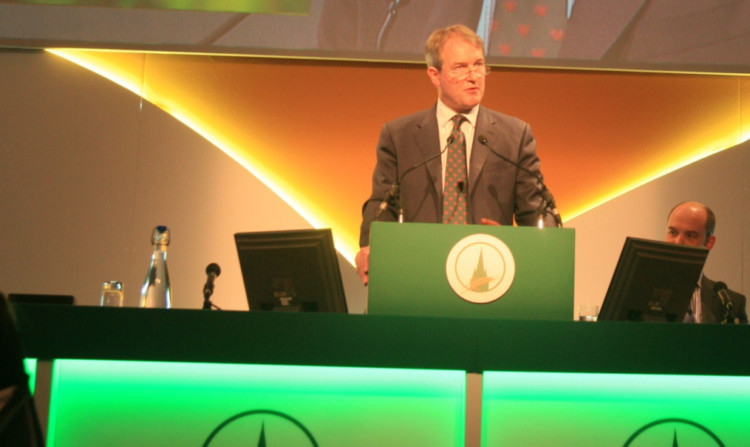Defra Secretary of state Owen Paterson has a unique style which can be interpreted as either being brisk and to-the-point or simply abrupt.
His answer to an Oxford farming conference question on internal convergence uplift was clearly in the latter category with an answer which ran to all of one short sentence. He would not reconsider his decision to spread 280 million euros of EU convergence funds around the UK rather than allocate it all to Scotland.
Scottish farming interests have been outraged by this decision since it was made in November on the grounds that it is only Scotland’s ultra-low historical allocation of EU funds that has made the uplift funds available.
Mr Paterson, however, only confirmed that he would stick to his timetable of reviewing the situation in 2016 for implementation in 2020. That is hardly a concession.
In his defence the secretary of state may not have been in the best of humours. Instead of opening the conference at 9am, he arrived after lunch having spent the morning in Westminster discussing the flooding situation in England.
Ironically his arrival at Oxford’s examination halls was further delayed because his train had to slowly forge a path through floodwaters at various points on the line. As is his habit he kept CAP reform to later in his speech majoring on the opportunities to be had from a growing market.
Farming contributed £9 billion annually to the UK economy.
The whole supply chain was worth £100bn and employed 4m people.
Import substitution offered great opportunities especially for fruit and vegetable growers but there were also great rewards beckoning from increased imports.
The Chinese pork market had only been open to the UK since 2012, but it had grown from £5m in the first nine months to £14m in the next nine months.
Mr Paterson also expressed his exasperation at the lack of adoption of GM technology in Europe.
“When does an experiment stop being an experiment? We are now in the position where 12% of the world’s arable land is growing GM crops without problems. If we don’t make a move we risk becoming the museum of old agricultural technology,” he said.
“Delays and blockages have been politically rather than based on evidence. I will continue to make the case for a regime that allows fair market access for products once they have passed Europe’s rigorous independent scientific assessment.”
Mr Paterson noted that there would be an EU vote later this month on a GM insect-resistant maize variety. If it was granted it would be the first GM authorisation in Europe for 15 years. Bovine TB understandably dominates every farming discussion in England.
Mr Paterson pointed out that currently 90 cattle were being slaughtered every day because they had reacted positively to tests.
“The cost to taxpayers will be £1bn over the next 10 years unless we take action,” he said.
The target was to achieve official TB freedom for all of England within 25 years and there was already considerable investment in developing a cattle vaccine.
In the meantime control in wildlife would be essential, Mr Paterson insisted.
The recent badger culls had been pilots which, contrary to reports, had seen significant numbers of diseased badgers removed. Farmers had told him that they expected to see a resulting reduction in cattle disease but he would delay a decision on a wider cull until an expert review panel had completed its work.
“Last year saw the first steps on the road to TB free status. I want to see healthy badgers living alongside healthy cattle,” he concluded.
